Expert Quotes on the Fall Mt. Hood Real Estae Market
Liz Warren
Displaying blog entries 451-460 of 1966
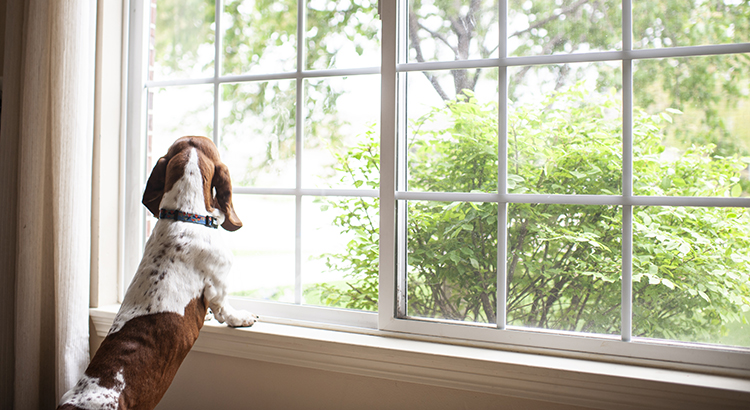
If you’ve been in your home for longer than five years, you’re not alone. According to recent data from First American, homeowners are staying put much longer than historical averages (see graph below):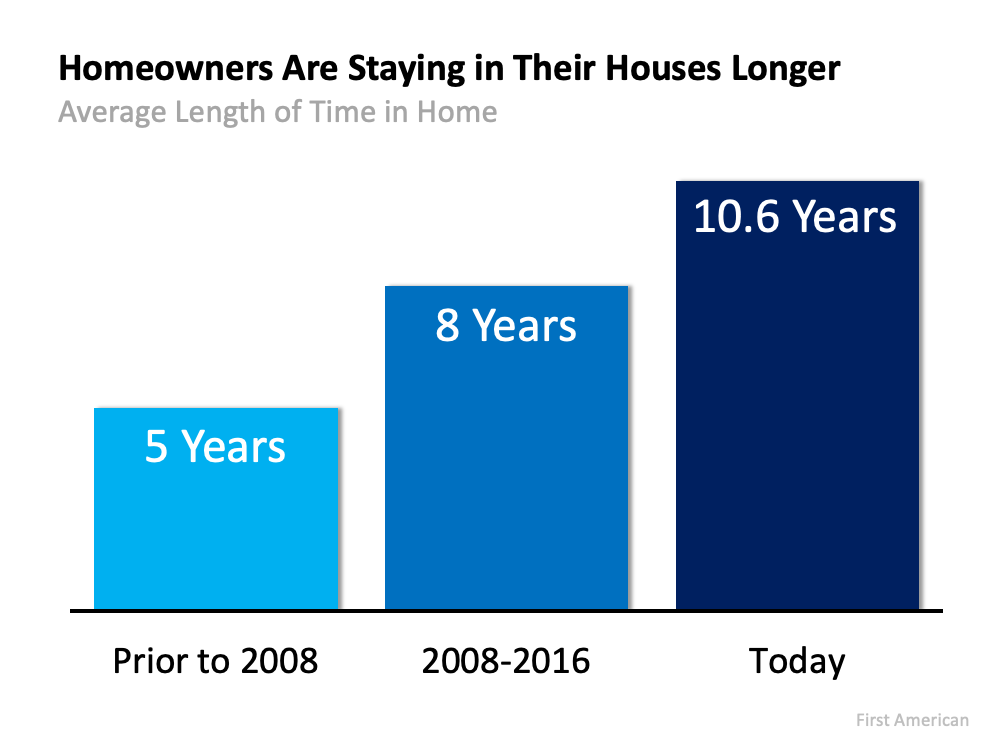 As the graph shows, before 2008, homeowners sold their houses after an average of just five years. Today, that number has more than doubled to over 10 years. The housing industry refers to this as your tenure.
As the graph shows, before 2008, homeowners sold their houses after an average of just five years. Today, that number has more than doubled to over 10 years. The housing industry refers to this as your tenure.
To really explore tenure, it’s important to understand what drives people to make a move. An article from The Balance explores some of the primary reasons individuals choose to sell their houses. It says:
“People who move for home-related reasons might need a larger home or a house that better fits their needs, . . . Financial reasons for moving include wanting a nicer home, moving to a newer home to avoid making repairs on the old one, or cashing in on existing equity.”
If you’ve been in your home for longer than the norm, chances are you’re putting off addressing one, if not several, of the reasons other individuals choose to move. If this sounds like you, here are a few things to consider:
As the past year has shown, our needs can change rapidly. That means the longer you’ve been in your home, the more likely it is your needs have evolved. The Balance notes several personal factors that could lead to your home no longer meeting your needs, including relationship and job changes.
For example, many workers recently found out they’ll be working remotely indefinitely. If that’s the case for you, you may need more space for a dedicated home office. Other homeowners choose to sell because the number of people living under their roof changes. Now more than ever, we’re spending more and more time at home. As you do, consider if your home really delivers on what you need moving forward.
One of the biggest benefits of homeownership is the equity your home builds over time. If you’ve been in your house for several years, you may not realize how much equity you have. According to the latest Homeowner Equity Report from CoreLogic, homeowners gained an average of $33,400 in equity over the past year.
That equity, plus today’s low mortgage rates, can fuel a major upgrade when you sell your home and purchase a new one. Or, if you’re looking to downsize, your equity can help provide a larger down payment and lower your monthly payments over the life of your next loan. No matter what, there are significant financial benefits to selling in today’s market.
If you’ve been in your home for 5-10 years or more, now might be the time to explore your options. Today’s low rates and your built-up equity could provide you with the opportunity to address your evolving needs. If you feel it’s time to sell, let’s connect.
![Have You Ever Seen a Housing Market Like This? [INFOGRAPHIC] | MyKCM](https://files.mykcm.com/2021/09/16133349/20210917-MEM-1046x2047.png)
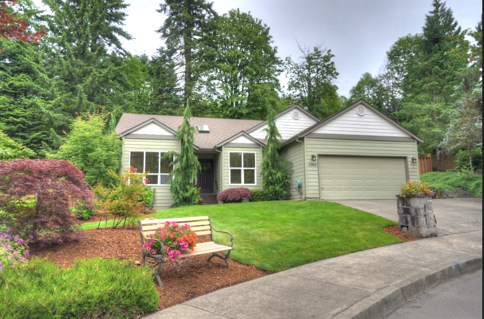
An important metric in today’s residential real estate market is the number of homes available for sale. The shortage of available housing inventory is the major reason for the double-digit price appreciation we’ve seen in each of the last two years. It’s the reason many would-be purchasers are frustrated with the bidding wars over the homes that are available. However, signs of relief are finally appearing.
According to data from realtor.com, active listings have increased over the last four months. They define active listings as:
“The active listing count tracks the number of for sale properties on the market, excluding pending listings where a pending status is available. This is a snapshot measure of how many active listings can be expected on any given day of the specified month.”
Historically, housing inventory increases throughout the summer months, starts to tail off in the fall, and then drops significantly over the winter. The graph below shows this trend along with the month active listings peaked in 2017, 2018, and 2019.
Last year, the trend was different. Historical seasonality wasn’t repeated in 2020 since many homeowners held off on putting their houses up for sale because of the pandemic (see graph below). In 2020, active listings peaked in April, and then fell off dramatically for the remainder of the year.
Due to the decline of active listings in 2020, 2021 began with record-low housing inventory counts. However, we’ve been building inventory over the last several months as more listings come to the market (see graph below):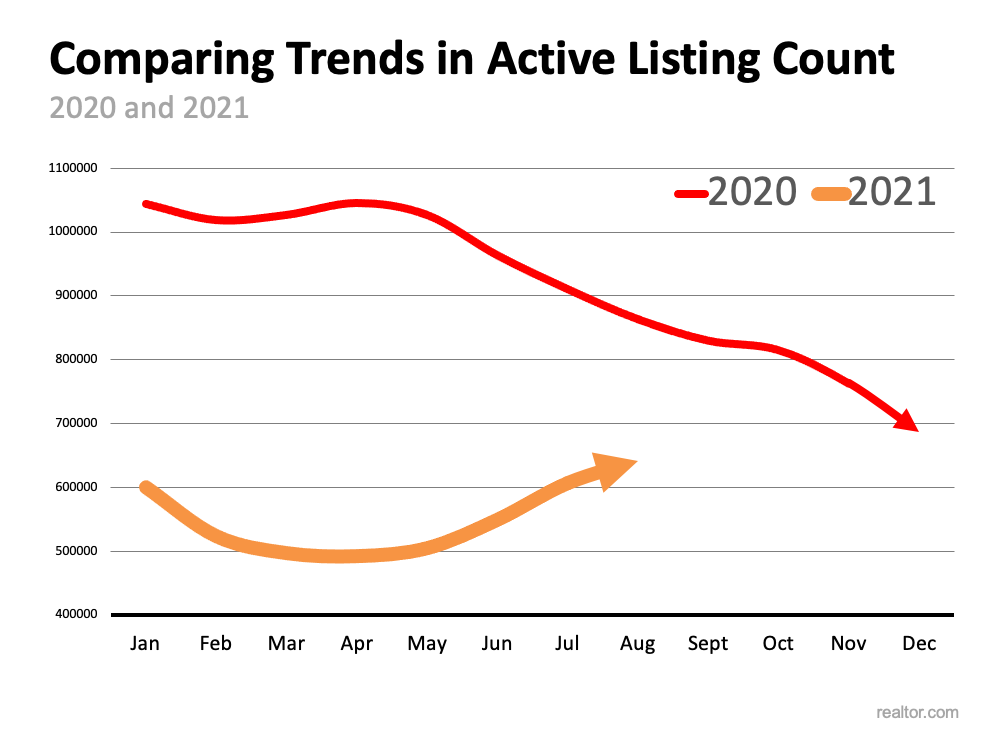 There are three main reasons we may see listings continue to increase throughout this fall and into the winter.
There are three main reasons we may see listings continue to increase throughout this fall and into the winter.
The Mt. Hood real estate market is seeing a small increase in inventory. We are currently up to 15 units on the market. Only six of those properties are under $400,000. Affordability is an issue with demand staying high.
If you’re in the market to buy a home, stick with it. There are new listings becoming available every day. If you’re thinking of selling your house, you may want to list your home before this additional competition comes to market.
Looking for a great getaway? This is it. This is a well maintained charmer with two bedrooms upstairs. A wonderful open floor plan features living room, kitchen and dining are all open to each other including windows galore letting in natural light. Wood stove will warm your toes after a day on the slopes. Large deck off of the dining room area for summer barbeques. Just steps to Still Creek which is one of the most popular creeks on the mountain. Dog and kid friendly Still Creek is great for summer wading and swimming. The cabin is located in the Mt. Hood National Forest. $350,000
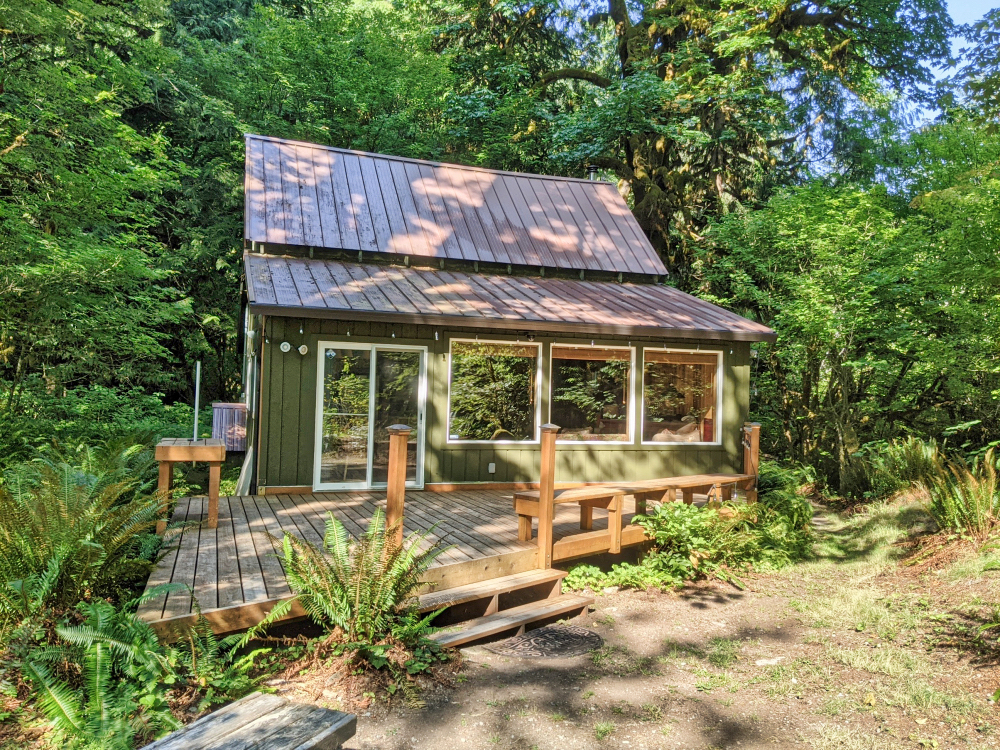
.jpeg)

Enjoy your 1935 mountain getaway near all Mt. Hood activities. One bedroom and mini sleeping loft. Everything you need with wood walls, lots of ambiance, vaulted ceilings, paned windows, decks and a fenced yard! Cozy wood stove to warm up your toes, two covered porches, outbuilding and wood shed. There's even a utility room for washer and dryer. Jetted tub in the bathroom. Only one hour to Portland! Mt. Hood National Forest just down the street and about 20 minutes to the slopes. $295,000
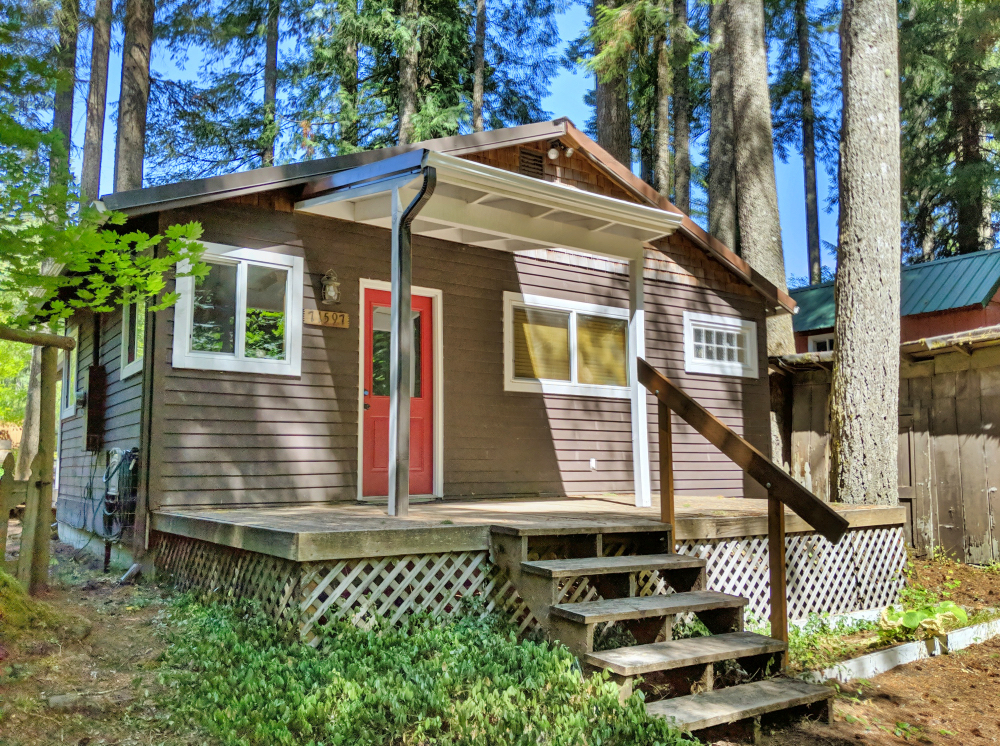
Mt. Hood National Forest log cabin on leased land. Two bedroom getaway! Vaulted ceilings and cozy fireplace with insert. Wood beams and cedar walls. Open floor plan. Comes furnished. Washer and dryer too! Deck on the front and covered porch on the back. Outbuilding for storage. Short walk to Still Creek for swimming, wading and spawning salmon in fall. Enjoy the outdoors in your Mt. Hood retreat only one hour from PDX. About 20 minutes to slopes. $275,000
.jpeg)
.jpeg)
As summer comes to a close, is it time to think about selling your vacation home? Based on recent data and expert opinions, it’s something you may want to consider. According to research from the National Association of Realtors (NAR), vacation home sales are up 57.2% year-over-year for January-April 2021.
If you’ve taken your last vacation this summer, here are reasons you should consider selling your vacation home this year.
As the report from NAR says, based on continuously evolving work needs, there could be more interest in your second home than you think:
“In 2020, across all nine divisions, the fraction of the workforce that work from home is typically higher in the vacation home counties than in the non-vacation home counties… The opportunity to work from home could further raise the demand for vacation homes in future years.
Recent data shows we’ll likely see a sustained increase in the rate of remote work over the next five years. That means your vacation home could be highly sought after by certain buyers. Lawrence Yun, Chief Economist at NAR, puts it best, saying:
"Vacation homes are a hot commodity at the moment . . . . With many businesses and employers still extending an option to work remotely to workers, vacation housing and second homes will remain a popular choice among buyers."
When demand is high, so is buyer competition. When competition is strong, buyers will do everything they can to make their offer on your vacation home as appealing as possible. This can include things like all-cash offers and more. If you sell now, you’ll be able to benefit from high buyer competition and pick the offer with the best possible terms for you. That offer could give you the opportunity to purchase the primary residence of your dreams.
Or, if you find that you’ll continue working from home, you could consider taking up more permanent residence in your vacation home and selling your primary residence instead. While this isn’t a choice everyone can consider, it could be a great option.
No matter what the situation, you don’t have to make the decision on your own. Your trusted real estate advisor can help you determine your best option when you’re ready to sell.
Buyers remain interested in vacation homes this year for a number of reasons. Now that summer is winding down, it’s time to think about taking advantage of today’s demand for vacation homes. Let’s connect today if you’re ready to give your second home its day in the sun.
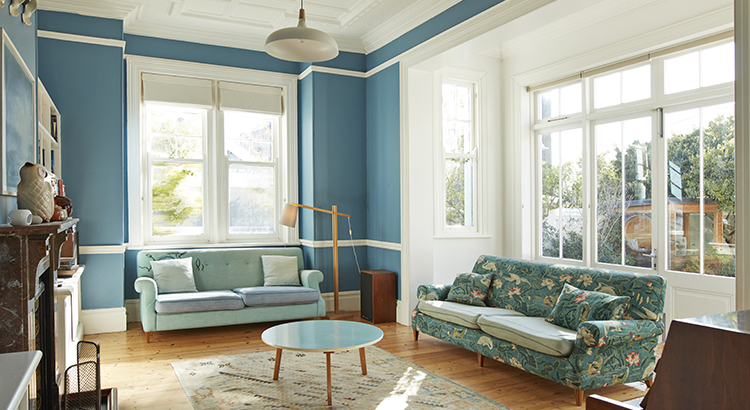
Whether or not you’ve been following the real estate industry lately, there’s a good chance you’ve heard we’re in a serious sellers’ market. But what does that really mean? And why are conditions today so good for people who want to list their house?
It starts with the number of houses available for sale. The latest Existing Home Sales Report from the National Association of Realtors (NAR) shows housing supply is still astonishingly low. Today, we have a 2.6-month supply of homes at the current sales pace. Historically, a 6-month supply is necessary for a ‘normal’ or ‘neutral’ market in which there are enough homes available for active buyers (see graph below): When the supply of houses for sale is as low as it is right now, it’s much harder for buyers to find homes to purchase. That creates increased competition among purchasers which leads to more bidding wars. And if buyers know they may be entering a bidding war, they’re going to do their best to submit a very attractive offer. As this happens, home prices rise, and sellers are in the best position to negotiate deals that meet their ideal terms.
When the supply of houses for sale is as low as it is right now, it’s much harder for buyers to find homes to purchase. That creates increased competition among purchasers which leads to more bidding wars. And if buyers know they may be entering a bidding war, they’re going to do their best to submit a very attractive offer. As this happens, home prices rise, and sellers are in the best position to negotiate deals that meet their ideal terms.
Right now, there are many buyers who are ready, willing, and able to purchase a home. Low mortgage rates and the ongoing rise in remote work have prompted buyers to think differently about where they live – and they’re taking action. If you put your house on the market while supply is still low, it will likely get a lot of attention from competitive buyers.
The Mt. Hood market currently has twelve single family residence for sale. Eight of those are over $600,000. Two properties in Government Camp are over $1,000,000.
Today’s ultimate sellers’ market holds great opportunities for homeowners ready to make a move. Listing your house now will maximize your exposure to serious buyers who will actively compete against each other to purchase it. Let’s connect to discuss how to jumpstart the selling process.

When you hear the phrase home price appreciation, what does it mean to you? Through context clues alone, chances are you know it has to do with rising home prices. And as a seller, you know rising home prices are good news for your potential sale. But let’s look past the dollar signs and dive deeper into the concept. To truly understand home price appreciation, you need to know how it works and why it matters to you.
Investopedia defines appreciation like this:
“Appreciation, in general terms, is an increase in the value of an asset over time. The increase can occur for a number of reasons, including increased demand or weakening supply, or as a result of changes in inflation or interest rates. This is the opposite of depreciation, which is a decrease in value over time.”
Recent report from RMLS for area 153, Mt. Hood reports 20.4% average sale percentage change with the average pricing point at $443,300!
When we consider this definition and how it applies to real estate, a few words stick out: supply and demand. In today’s real estate market, we’re experiencing high buyer demand and very few sellers listing their homes for sale (see maps below): No matter the industry, anytime there’s more demand than supply, prices naturally rise. It happens because buyers are willing to pay more to secure the scarce product or service they’re looking for. That’s exactly what’s happening in today’s real estate market. Buyers are competing with one another to purchase a home, leading to bidding wars that drive prices up. For sellers, the rising prices mean that opportunity is knocking.
No matter the industry, anytime there’s more demand than supply, prices naturally rise. It happens because buyers are willing to pay more to secure the scarce product or service they’re looking for. That’s exactly what’s happening in today’s real estate market. Buyers are competing with one another to purchase a home, leading to bidding wars that drive prices up. For sellers, the rising prices mean that opportunity is knocking.
According to Quicken Loans, the national average home price appreciation rate is between 3-5% in a typical year. Today, home prices are appreciating well beyond the norm thanks to high demand. Here are the latest expert projections on the rate of home price appreciation for this year (see chart below):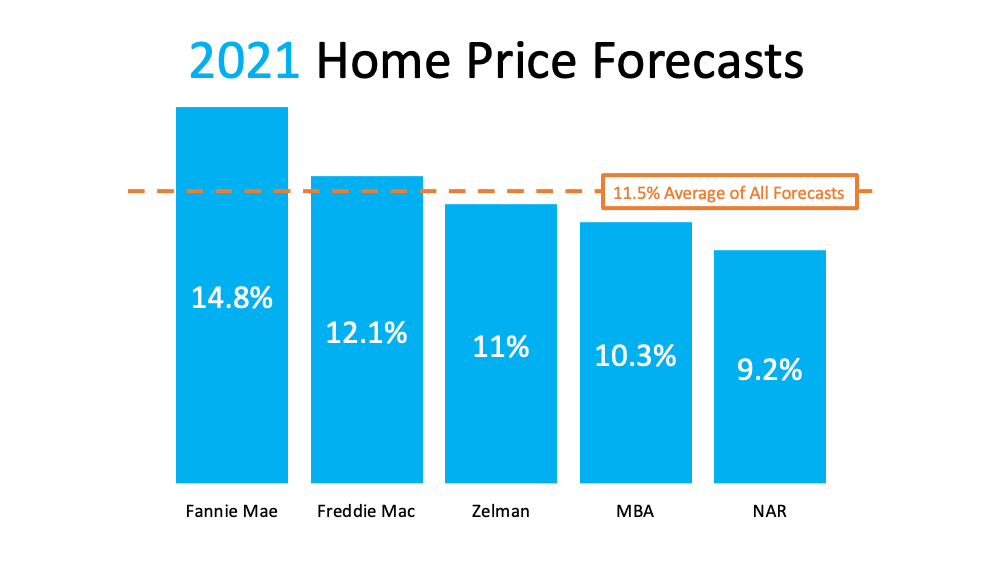
For sellers, this means that with the current rise in prices, your house may be worth more than you realize. That price appreciation helps give your equity a boost. Equity is the difference between what you owe on the home and its market value based on factors like price appreciation. It works like this (see chart below):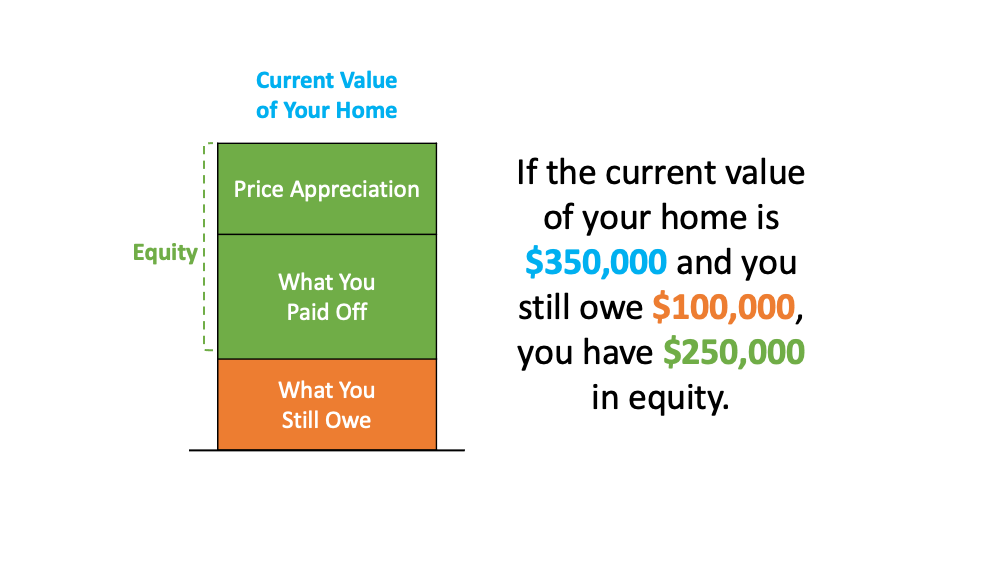 You can use your built-up equity to power a move into your dream home, or you can put it toward life-changing goals like funding an education or opening a business.
You can use your built-up equity to power a move into your dream home, or you can put it toward life-changing goals like funding an education or opening a business.
But don’t wait. While price appreciation is strong now, those same experts say it’ll start to appreciate at a more normalized pace next year. If you list your house sooner rather than later, you’ll be in a better position to capitalize on the higher-than-average home price appreciation we’re seeing today.
If you’re thinking of selling your house, there really is no time like the present. Let’s connect so you can get an expert market analysis of your home and its potential.
Displaying blog entries 451-460 of 1966

